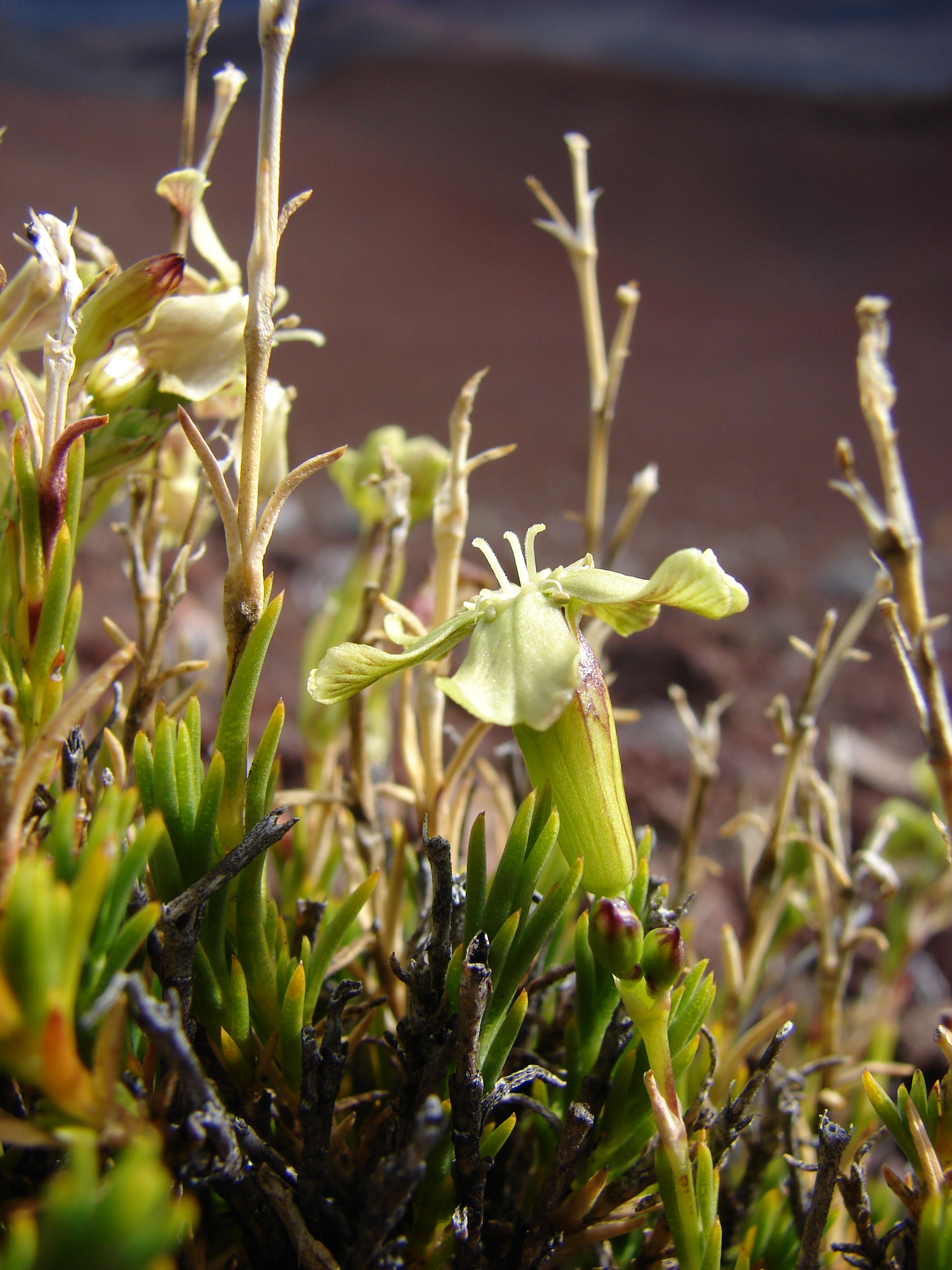Alpine Catchfly
(Silene struthioloides)

Description
Silene hawaiiensis is a rare species of flowering plant in the pink family known by the common names Hawai'i catchfly, Hawaiian catchfly and Sherff's catchfly. It is endemic to Hawaii, where it is known only from the island of Hawaii. It is threatened by the degradation of its habitat and it is a federally listed threatened species of the United States.This subshrub grows 15 to 40 centimeters tall and bears narrow leaves and greenish white flowers. The roots are spindle-shaped and sometimes grow exposed aboveground, which may help the plant survive.This plant grows on the lava and ash substrates of the volcanoes of the island of Hawaii. It grows at K-lauea, Mauna Loa, Mauna Kea, and Hual-lai.It is a member of the sparse flora in the southwest rift zone of Kilauea, which includes such plants as Coprosma ernodeoides (pilo), Dubautia ciliolata (naenae), Leptecophylla tameiameiae (pukiawe), Metrosideros polymorpha (--hi-a lehua), Nephrolepis exaltata (nianiau, ikupukupu), Sadleria sp. (amau), and Vaccinium reticulatum (-helo -ai). A recent estimate is a total of 22 populations containing 8360 individuals.Threats to the plant include fire in some areas. Fire also fosters the takeover of invasive plant species such as Pennisetum setaceum (fountain grass), which displaces native plants; the flammable fountain grass then increases the likelihood of more fire. Construction and other activities at Mauna Kea and the Pohakuloa Training Area may threaten some plants. Introduced Mouflon sheep are a threat to this and other native plants. Insect damage and climate change may be threats as well
Taxonomic tree:







